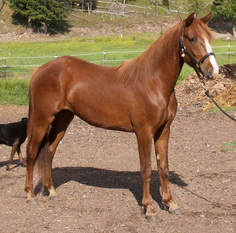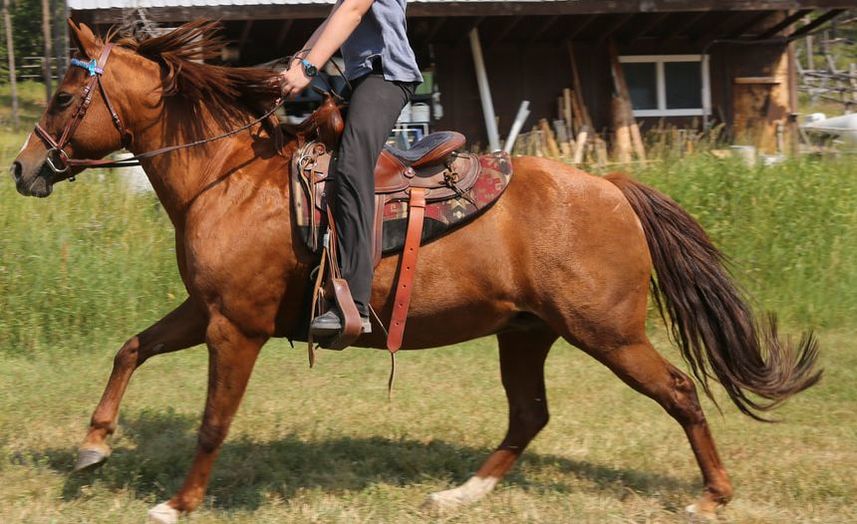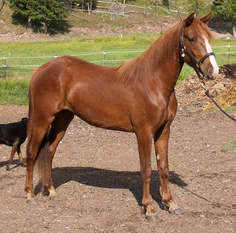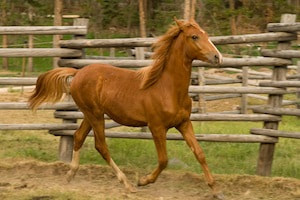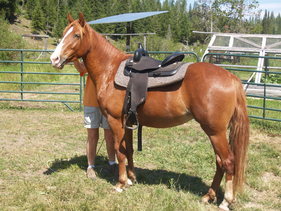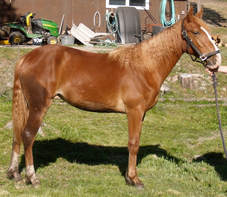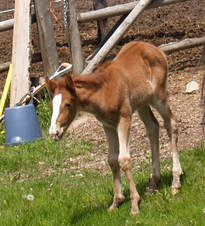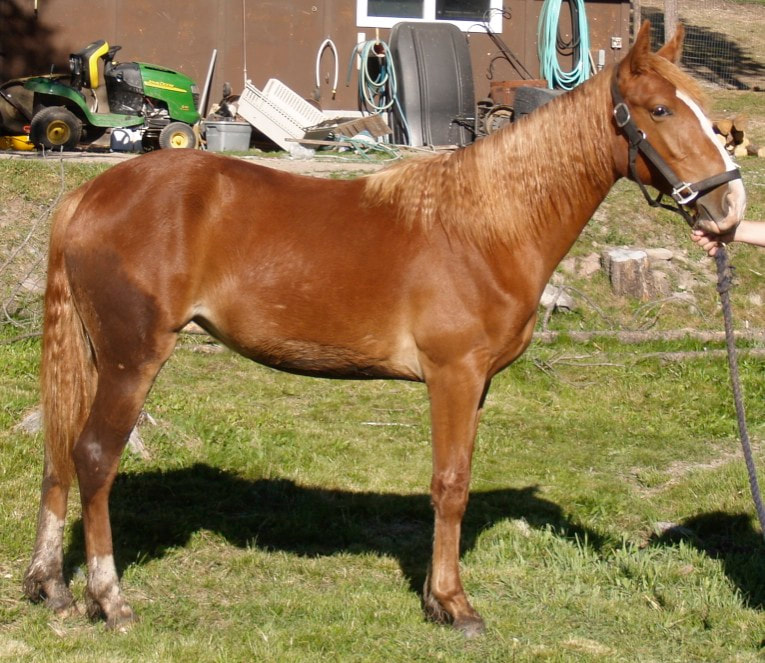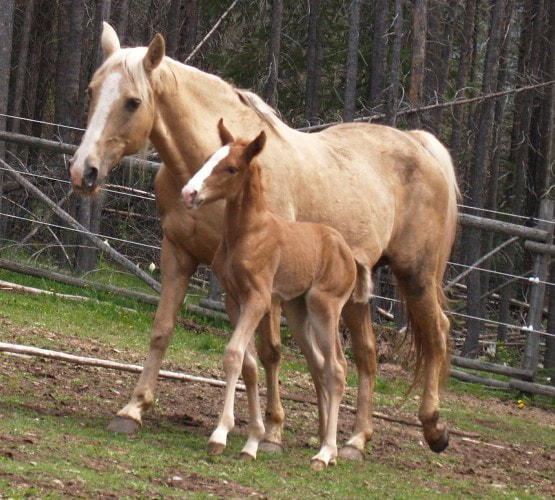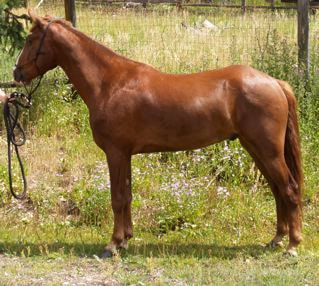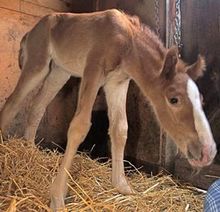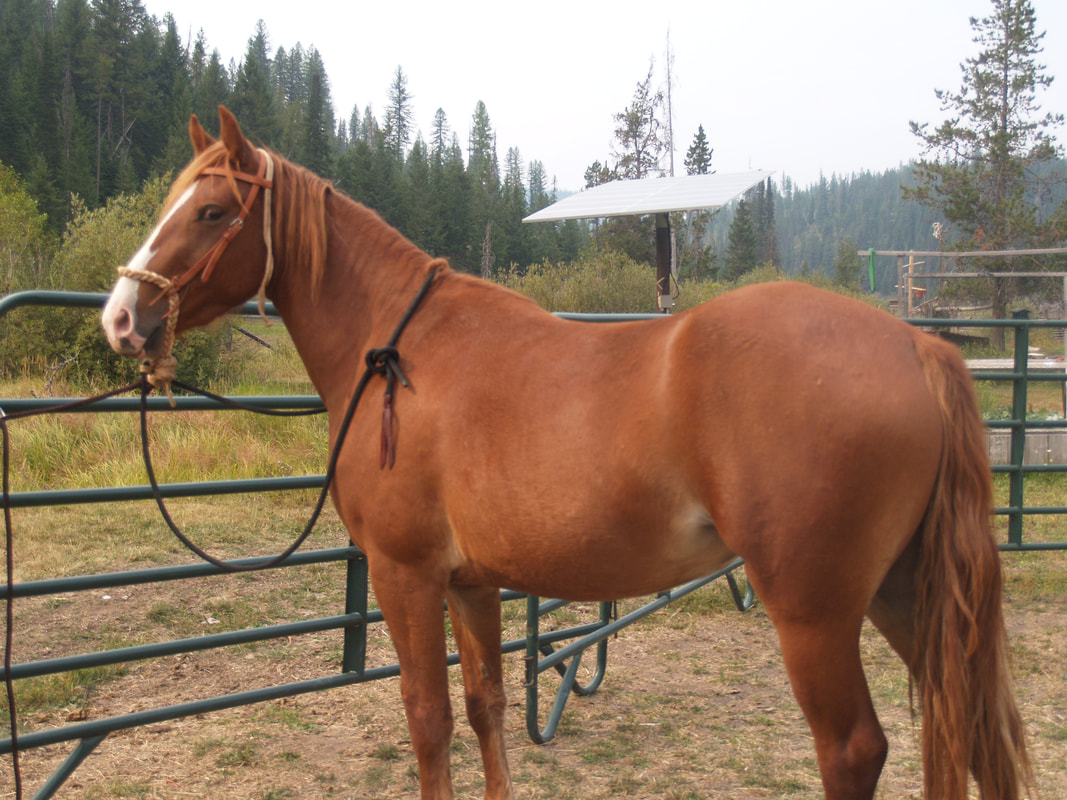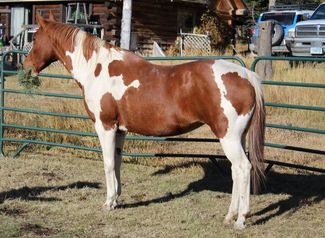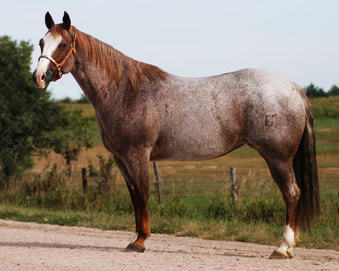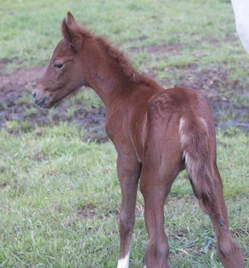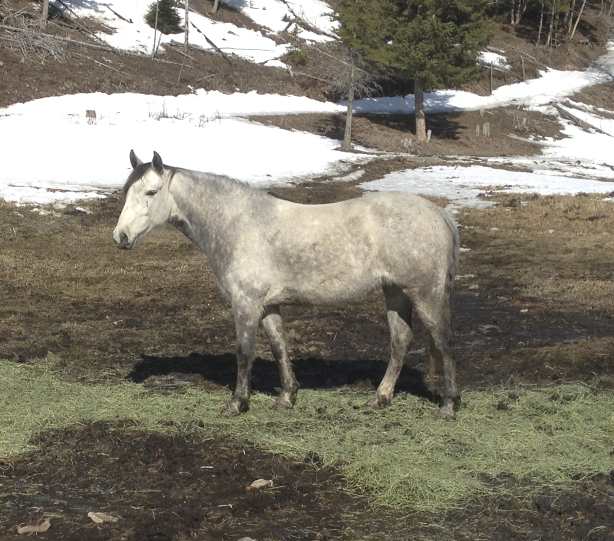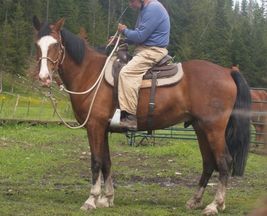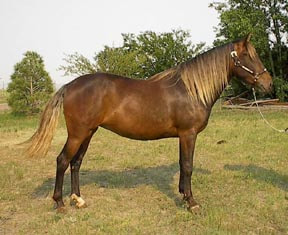horse Colors: Cremello
|
Chestnut and Sorrel Horses
Red horses are called both Chestnut and Sorrel. These names are mostly used interchangeably, with sorrel being more commonly used among western riding disciplines and chestnut more commonly used among english disciplines. However, some people do use them to indicate slightly different colors. Some people use the term sorrel to refer to a red horse who is bright in color, leaning almost towards orange-red, where-as a chestnut horse is one of a deeper, or more brown-red color. For our purposes here, we will just call all red horses Chestnut. Chestnut is the second-most common color among horses. |
|
Genetics: Chestnut is the most recessive of the colors. Thus, the only way a horse can be chestnut is if it receives a red gene from both its mother AND its father. Chestnut is, therefore, always homozygous for the red gene, and a Chestnut parent will always pass a copy of the red gene on to all of its offspring.
All chestnut horses have the genetic makeup: (ee) and are homozygous for the red gene. A chestnut horse's A gene could be any possible combination: (aa) or (Aa) or (AA) |
Description: Chestnut horses have a red body color, red legs, and either red or white/flaxen mane and tail. Though there is be some diversity in the shade of red in different horses, red horses are generally the least diverse looking horse color. Most red horses look similar to other red horses.
|
|
|
Foal Colors
Though many horse colors are significantly different at birth from their appearance as adults, Red horses are born looking pretty close to what they will look like all of their lives. The only difference is that the red colors is often (though not always) a bit lighter at birth and darkens out into deeper shades of red as the horse grows up.
Though many horse colors are significantly different at birth from their appearance as adults, Red horses are born looking pretty close to what they will look like all of their lives. The only difference is that the red colors is often (though not always) a bit lighter at birth and darkens out into deeper shades of red as the horse grows up.
Other Color Genes Mixed With Red
Other Colors Easily Mistaken for Red
There aren't many other colors which are easily mistaken for red.
There aren't many other colors which are easily mistaken for red.
|
Gray - A horse with one or two of its Gray genes turned ON will be born some color other than gray. If it is born Chestnut, it may be mistaken for a Chestnut horse at birth. The graying process will begin as it gets older, eventually turning the horse pure white, with many, often stunning, in between shades as it grows. Those in between shades often rid the horse of any of its previous red but leave black in its place for a time. To the right is a filly who seemed Chestnut at birth, but became all white by the time she was 15 years old. You can see that her in between stage, at about 7 years of age, looks nothing like the Chestnut color she appeared at birth.
|
|
Bay - The bay coloring can sometimes produce a red body, but a bay horse's mane and tail are always black, whereas a red horse's mane and tail are either red or white, so these are easily distinguished from each other.
|
|
Red Chocolate - Some red chocolates horses may be mistaken for red at certain times in their lives. Most of them have enough black in their manes and tails that if they are going to be mistaken for anything other than a chocolate, it will be bay, but sometimes the chocolate gene lightens the mane and tail just enough to make them look red rather than either flaxen or brown. (The Red Chocolate horse is, by the way, not actually derived from a red base color, but from a bay base color. The Chocolate gene (also known as the Silver Dapple gene) alters the horse's coloring much less than a normal chocolate horse whose base color is either Red or Black and who has the distinctive brown body with the flaxen mane and tail.) |
|
|
YOUR MARE: Is your mare red?
